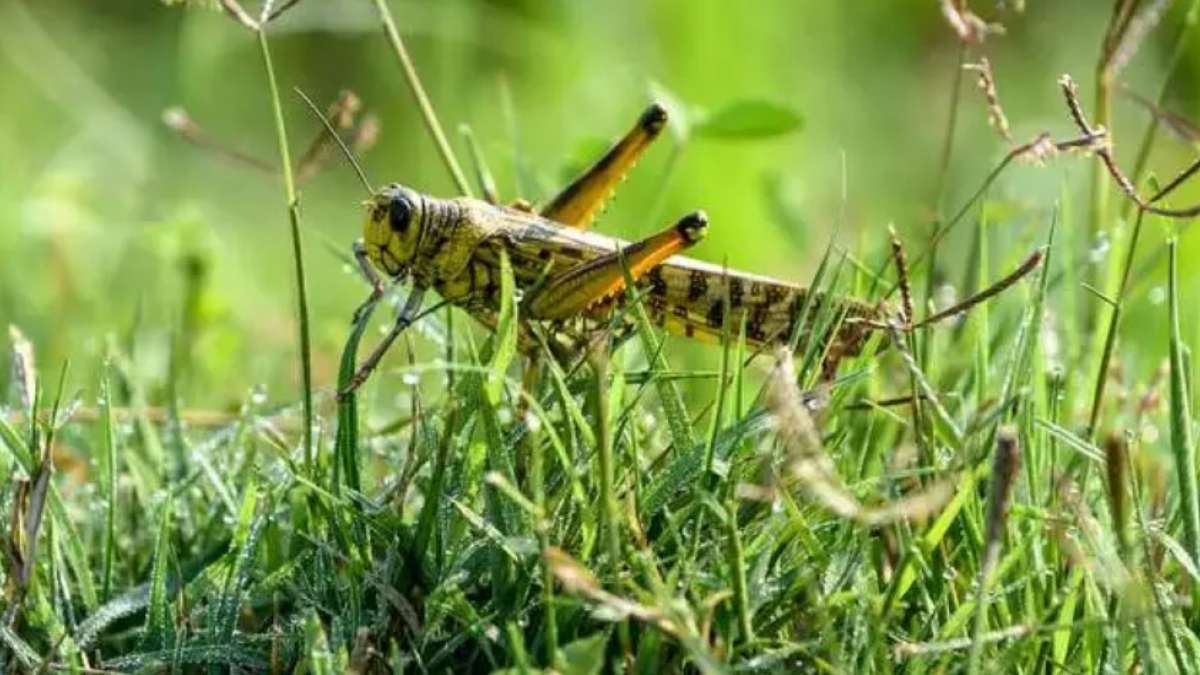Locusts have finally reached the northern central region of India and the heart of the country. In the city of Agra in Uttar Pradesh, the large-sized desert locusts, for which warnings were issued since the beginning of 2020, have been witnessed in the last few days.
Although we came across the warnings in the news and other media sources much earlier, to witness them, in reality, was a different experience altogether. They were light brown and yellow coloured and bigger in size compared to grasshoppers. At night, the locusts were not active and were found lying around on the terrace of houses. One could spot them in every corner.
Although the next morning, as you look up at the sky, you’d first perceive them as birds flying high up in the sky. But as you look closely, you’d be surprised that the sky is not full of birds but locusts. Large swarms of locusts flying in the sky in large groups. Up to hundreds of such swarms might have crossed within an hour while the people observed.
To imagine how many of them might have flown to and from distant places, clearing vegetation, is quite different from contemporary times as swarms and mass migration of such insects had not been seen through cities for decades.
People covered the trees in their locality and plants on their terraces to protect them from the voracious locusts. They had even witnessed them lying around on the roadside and open grounds during dusk and dawn.
Although the warning had been issued and people were prepared, yet, to find these swarms across the cities and the concrete jungles was a surprise. Adding to the surprise, they’ve not fully grown even if they already seem too big.
They’ll get bigger during and after the monsoon and start breeding. Then they’ll attain an even bigger size and probably be more voracious and a bigger threat to the vegetation and agriculture. One could even witness the locusts striking the window pane of their car while driving on the highway surrounded by farms and villages on both sides.
The locals have witnessed and describe the locust plague of the 1970s as they again see the swarms in the sky and their surrounding areas. They recall how the sky used to be covered with thick clouds of green locusts. Many of them even invaded houses. People had to sweep them out each day. There were so many that big sacks of jute were piled up with them everyday from each house in the area.
The big sized Great Banyan tree was eaten almost entirely leafless by the end of the day when the locusts first came into the city. However, at that time, they weren’t as big as the ones we see today. At that time, those locusts were green coloured and smaller in size. They had come from indigenous states such as Madhya Pradesh. The plague lasted for about a week.
Even in the middle of the city, locusts were everywhere. They ate up all the trees, plants and other vegetation within hours wherever they went. Such was the havoc and scenario of the 1970s and 1980s locust plague. Even at that time, such mass infestation was a rare event.
Now, since the swarms have reached Delhi, Uttar Pradesh and other states including the middle of big cities and concrete jungles, people are becoming increasingly aware and have started to cover their gardens, potted plants and trees inside as well as outside their homes to protect them from infestation.
In the coming days, experts have said that air direction would also play a major role in determining their direction of movement, which is now dominant towards Madhya Pradesh. Also, in the middle of the monsoon, they will infest more, breed and multiply their numbers and will get bigger in size. We still need to take all precautions.
After the monsoons, the locusts are believed to be seen more frequently and the possibility is that we face the effects we suffered in the previous plagues. In the different states of India, including the city of Agra in Uttar Pradesh, locusts have come in huge swarms and covered the sky like clouds.
The occupation of more than 60% of people in India is agriculture and its related activities. Mass infestation and damage to crops by these huge swarms of locusts will directly affect their lives and earnings, and indirectly everyone will face the effects.
Countries in Africa where these locusts migrated through in the past few months have already suffered huge losses in terms of food crop destruction. Government and the locals have adopted various strategies to counter them with the resources available. We must be aware and take all precautions for such a potential threat in the days ahead.

